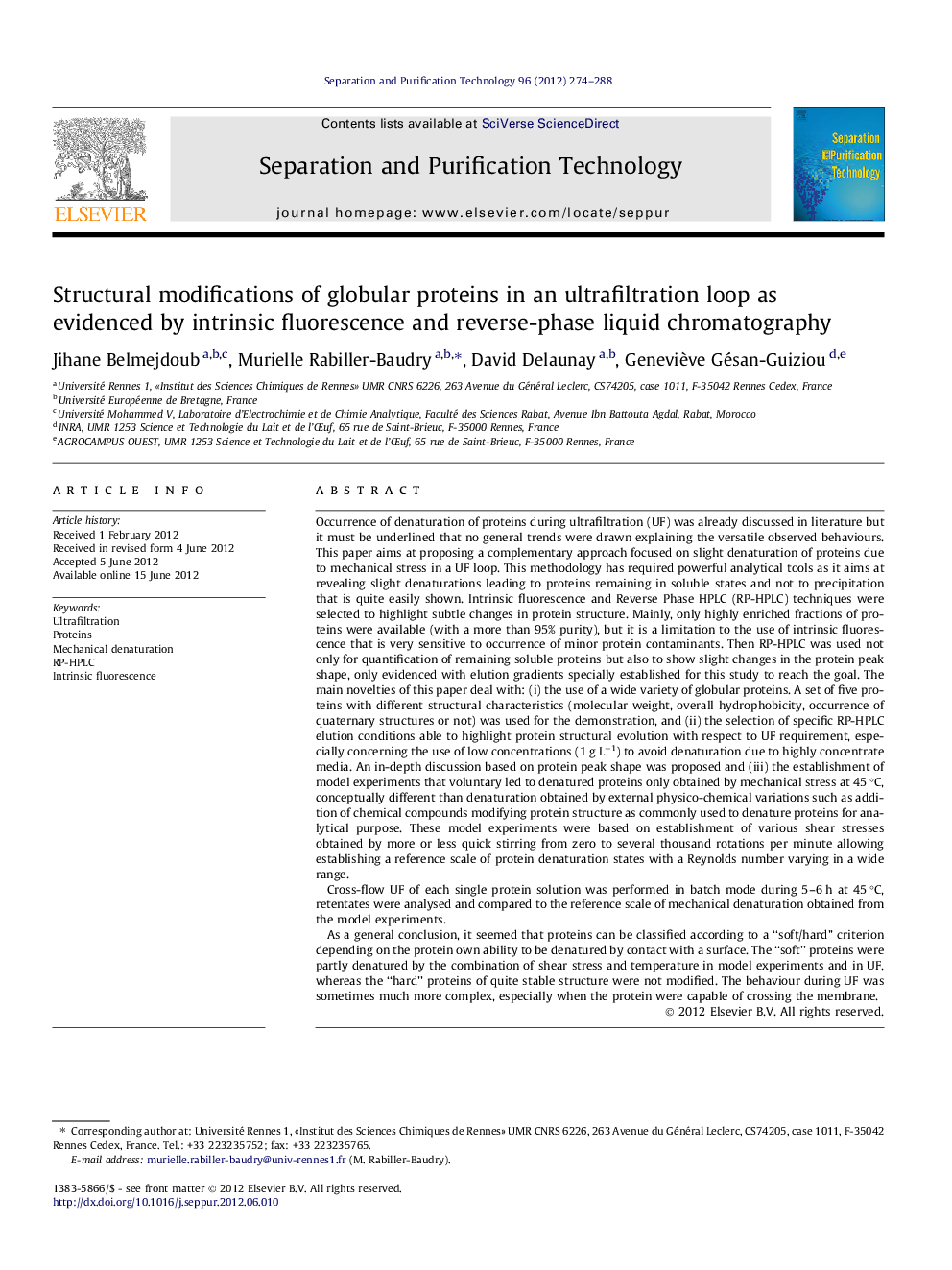| کد مقاله | کد نشریه | سال انتشار | مقاله انگلیسی | نسخه تمام متن |
|---|---|---|---|---|
| 642139 | 1457023 | 2012 | 15 صفحه PDF | دانلود رایگان |

Occurrence of denaturation of proteins during ultrafiltration (UF) was already discussed in literature but it must be underlined that no general trends were drawn explaining the versatile observed behaviours. This paper aims at proposing a complementary approach focused on slight denaturation of proteins due to mechanical stress in a UF loop. This methodology has required powerful analytical tools as it aims at revealing slight denaturations leading to proteins remaining in soluble states and not to precipitation that is quite easily shown. Intrinsic fluorescence and Reverse Phase HPLC (RP-HPLC) techniques were selected to highlight subtle changes in protein structure. Mainly, only highly enriched fractions of proteins were available (with a more than 95% purity), but it is a limitation to the use of intrinsic fluorescence that is very sensitive to occurrence of minor protein contaminants. Then RP-HPLC was used not only for quantification of remaining soluble proteins but also to show slight changes in the protein peak shape, only evidenced with elution gradients specially established for this study to reach the goal. The main novelties of this paper deal with: (i) the use of a wide variety of globular proteins. A set of five proteins with different structural characteristics (molecular weight, overall hydrophobicity, occurrence of quaternary structures or not) was used for the demonstration, and (ii) the selection of specific RP-HPLC elution conditions able to highlight protein structural evolution with respect to UF requirement, especially concerning the use of low concentrations (1 g L−1) to avoid denaturation due to highly concentrate media. An in-depth discussion based on protein peak shape was proposed and (iii) the establishment of model experiments that voluntary led to denatured proteins only obtained by mechanical stress at 45 °C, conceptually different than denaturation obtained by external physico-chemical variations such as addition of chemical compounds modifying protein structure as commonly used to denature proteins for analytical purpose. These model experiments were based on establishment of various shear stresses obtained by more or less quick stirring from zero to several thousand rotations per minute allowing establishing a reference scale of protein denaturation states with a Reynolds number varying in a wide range.Cross-flow UF of each single protein solution was performed in batch mode during 5–6 h at 45 °C, retentates were analysed and compared to the reference scale of mechanical denaturation obtained from the model experiments.As a general conclusion, it seemed that proteins can be classified according to a “soft/hard” criterion depending on the protein own ability to be denatured by contact with a surface. The “soft” proteins were partly denatured by the combination of shear stress and temperature in model experiments and in UF, whereas the “hard” proteins of quite stable structure were not modified. The behaviour during UF was sometimes much more complex, especially when the protein were capable of crossing the membrane.
► Methodological approach to evidence the mechanical denaturation of proteins during UF.
► Based on efficient intrinsic fluorescence and RP-HPLC and model experiments of denaturation.
► To build a scale of mechanical denaturation further used to compare UF effect.
► A set of five globular proteins was used for the demonstration.
► Two behaviours can be distinguished according to protein behaviour toward a surface.
Journal: Separation and Purification Technology - Volume 96, 21 August 2012, Pages 274–288